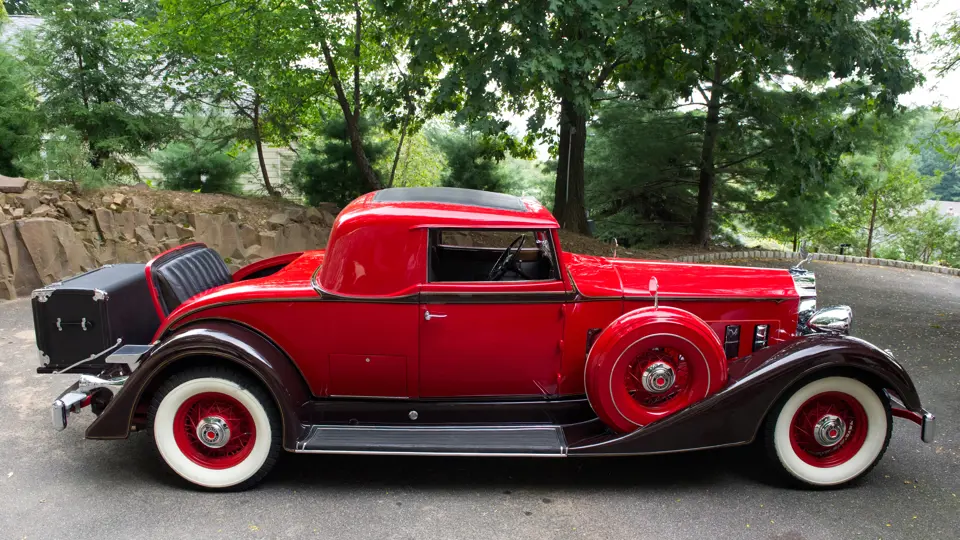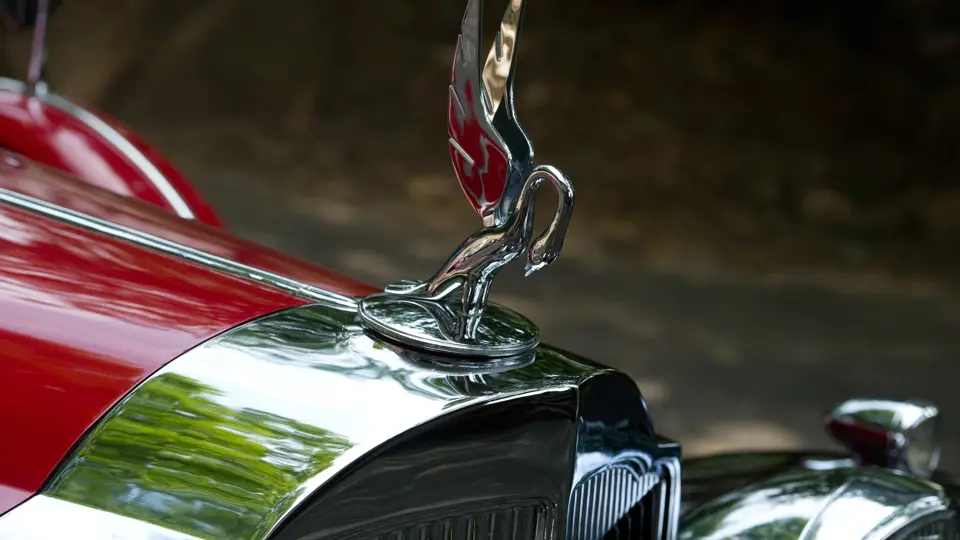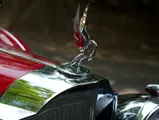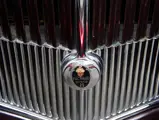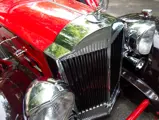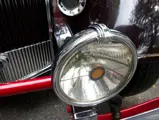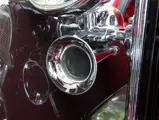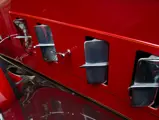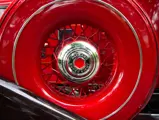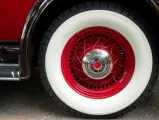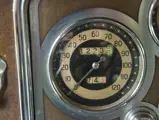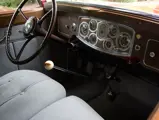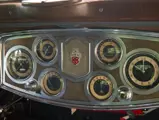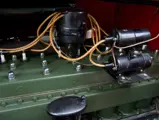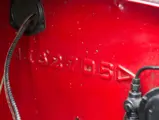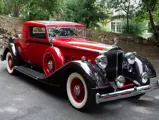Series 1104. 145 bhp, 384.8 cu. in. L-head inline eight, three-speed manual transmission, front and rear semi-elliptic leaf spring suspension with beam front axle and live rear axle, four-wheel mechanical drum brakes. Wheelbase: 141⅞"
- Lovely color combination
- Offered from a respected collection of classics
- Desirable model year
The Depression had a tremendous impact on fine auto manufacturers in North America, reducing sales to a fraction of what they were in the early 1920s and putting a majority of companies out of business. In fact, from 1929 to 1933, Packard production dropped nearly half each year when compared with the previous. In spite of slipping sales, Packard continued to make improvements each year, and as a result the company was able to maintain a hold on its market share.
The tenth-series cars offered a number of updates, including the new X-braced frames, driver adjustable power brakes, downdraft carburetion, automatic chokes and dual-coil ignition. Styling changes were made with the eleventh-series cars given new bumpers, more deeply skirted fenders, sleek and stylish wind-splits on the hood doors, relocation of the fuel filler and a host of other details. The Packard catalog was greatly expanded from six series on five wheelbases to six wheelbases and a full nine different series. The long, 147-inch wheelbase became available in the Super Eight series and with it a line of catalogued custom bodies from LeBaron and Dietrich.
Although Packard offered a wide variety of roadsters and convertible coupes, two-passenger closed coupes were few and usually derived from the convertible coupe body. Beginning in 1932 with the new Light Eight model, Packard gave the closed coupes a bit more style by echoing the convertible contours in the fixed roof. For 1933, after the Light Eight was dropped because of poor sales, the stylish 2/4-passenger coupe was continued in the entry-level Eight line. These all had rumble seats and had the same golf bag door as the roadsters and convertibles. An interesting feature was the small rear window that rolled down for better ventilation. This style continued into 1934 with the Series 1101 Eight, 1104 Super Eight and 1107 Twelve.
This 1934 Packard 1104 Super 8 Coupe has resided with its current caretaker for many years. Very few of these coupes survive, as most were turned into convertibles over the years. The owner, a connoisseur of many CCCA Classics, states that this car is exercised quite regularly in his collection. An older restoration, it is finished in a striking two-tone scheme of Red with Black fenders and belt molding. It retains its original Grey cloth interior and rides on Red spoke wire wheels with wide whitewall tires. It is optioned with dual side-mounted spare tires with full metal covers and mirrors, Trippe lights and a correct Packard trunk. The 1934 Packard is the most highly regarded example of the venerable marque due to its classic lines and outstanding performance; this example is nicely presented, reportedly well sorted and ready for touring.

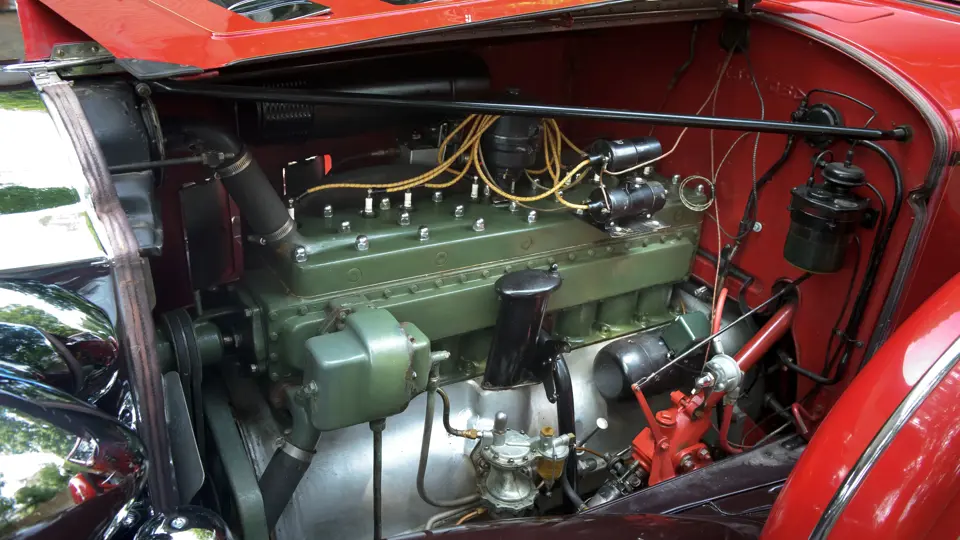


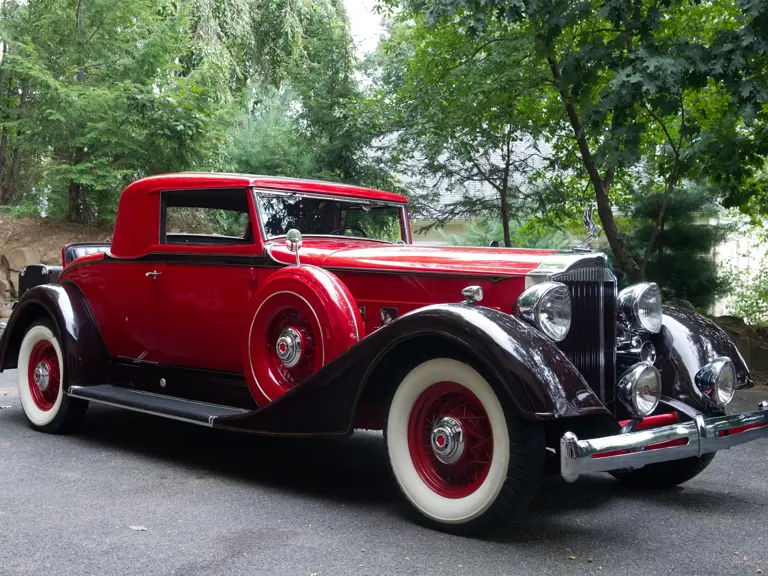





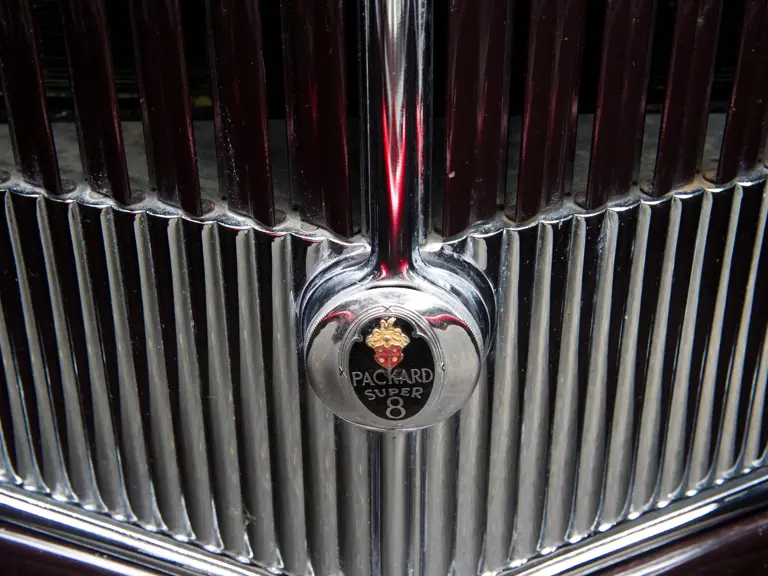

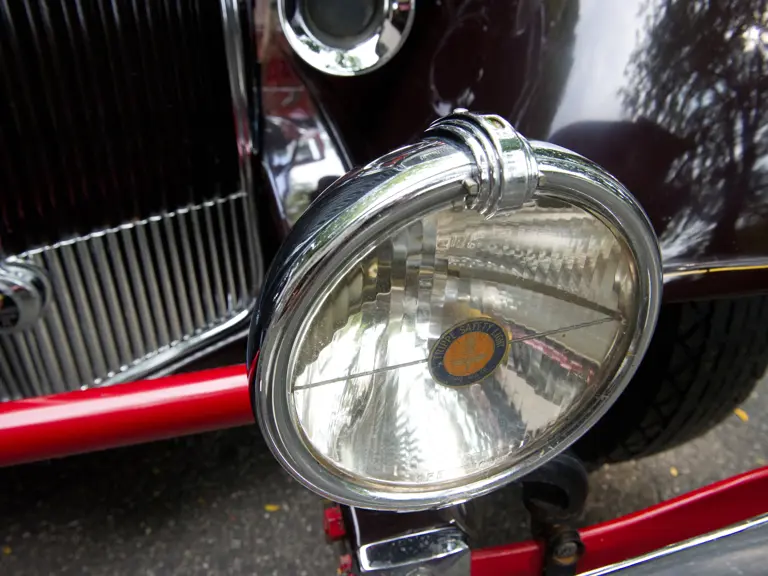
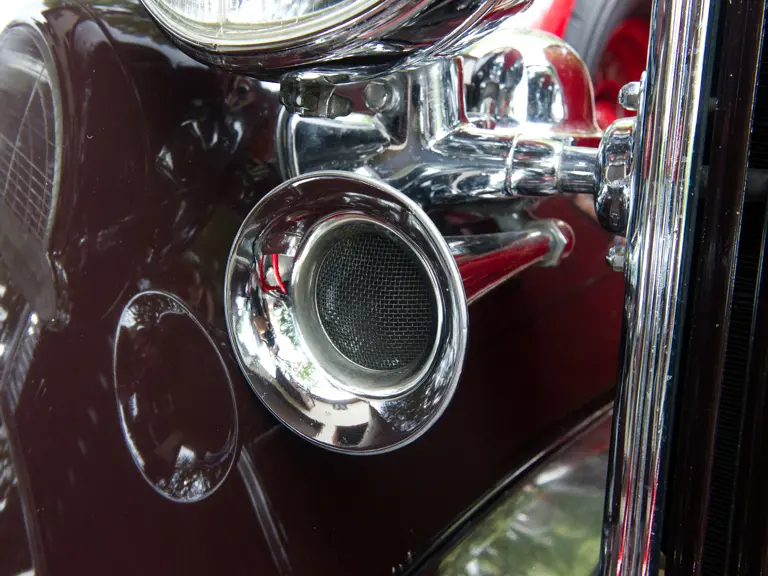
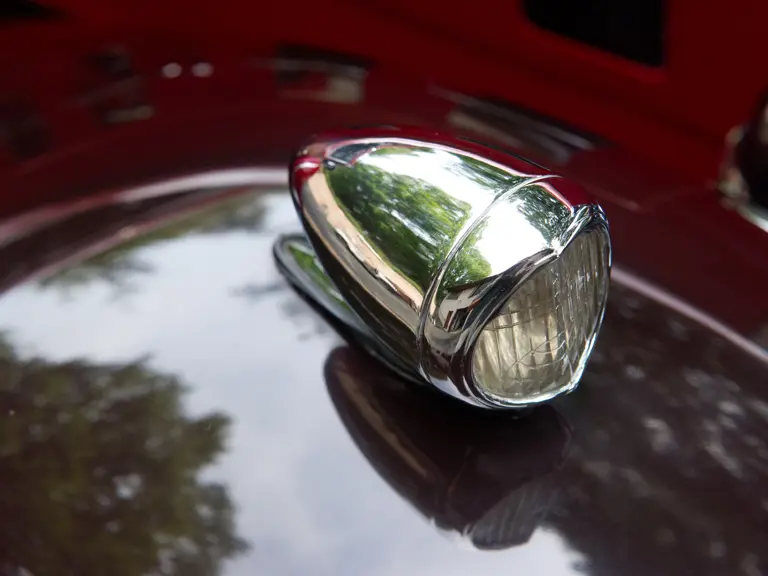

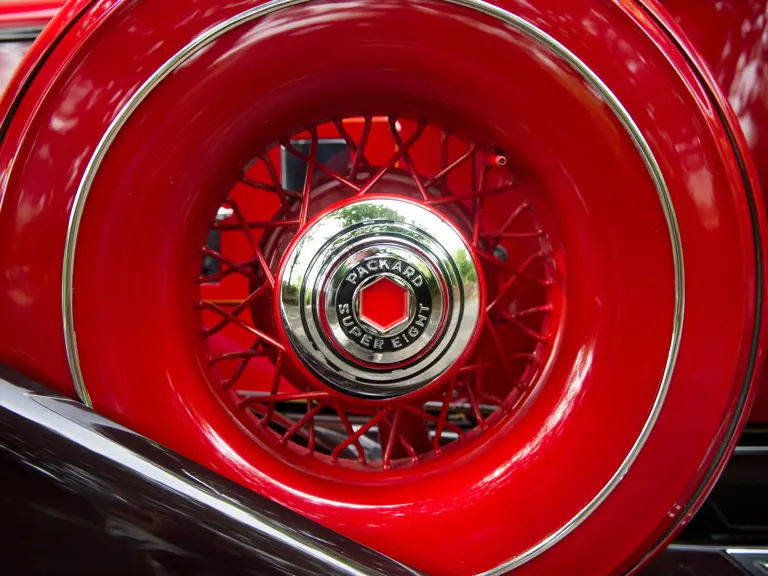
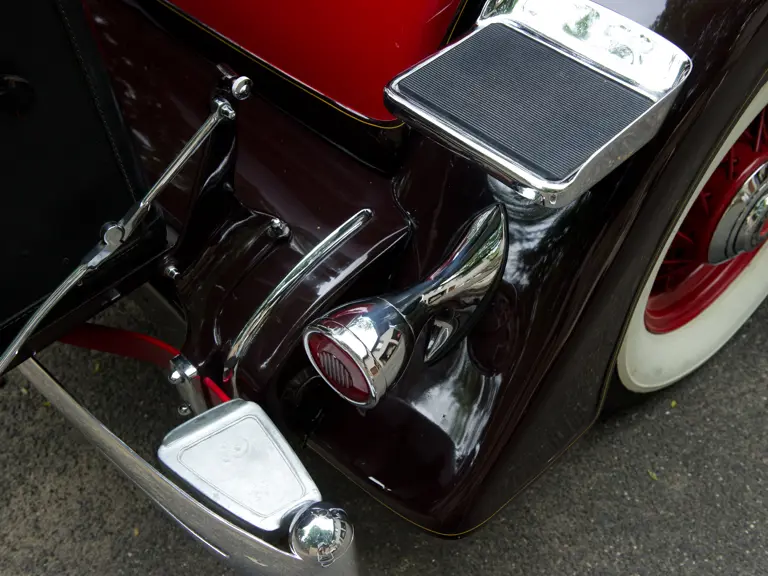
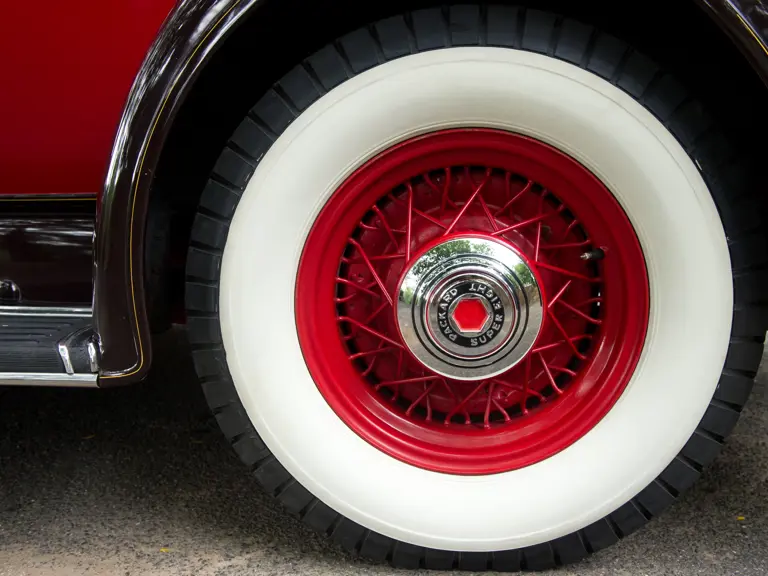
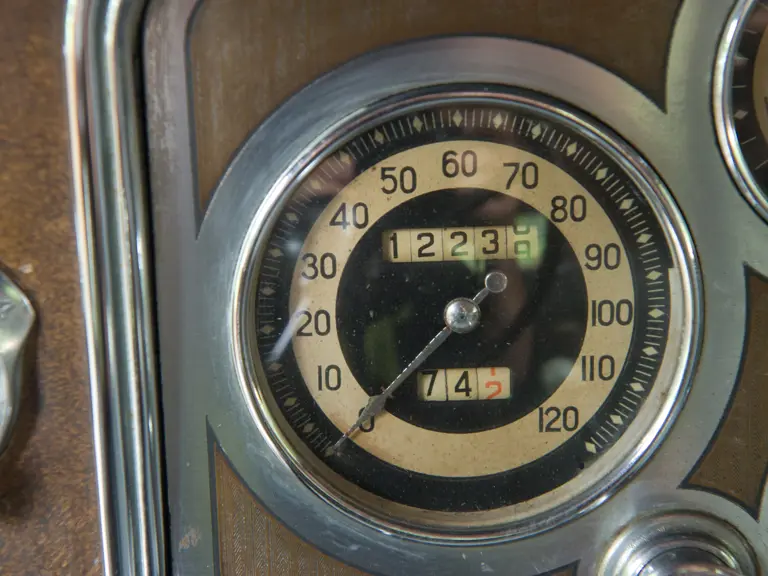
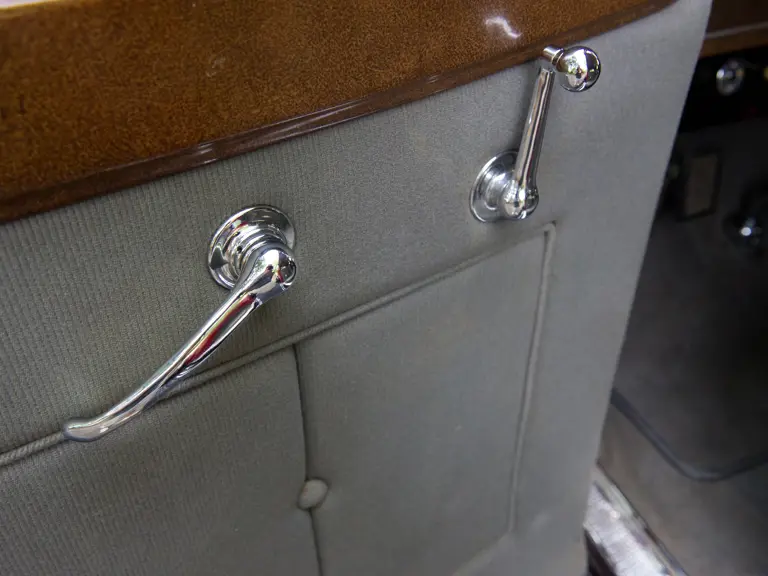

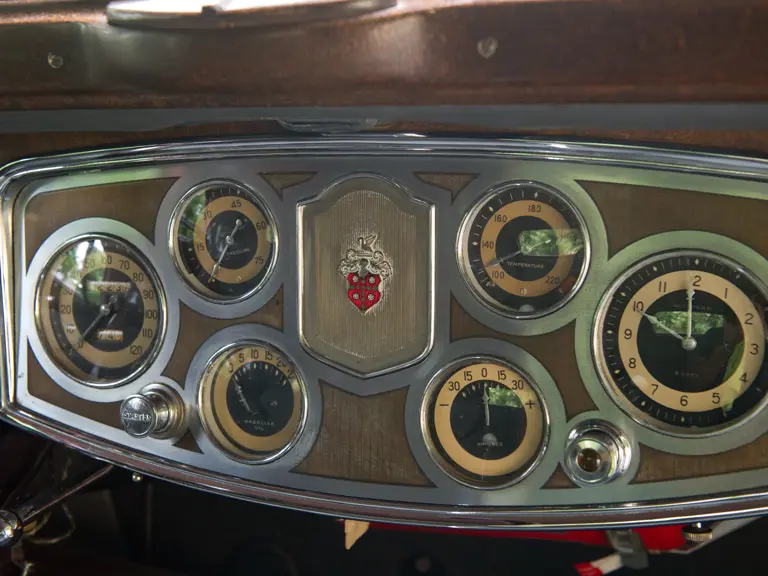

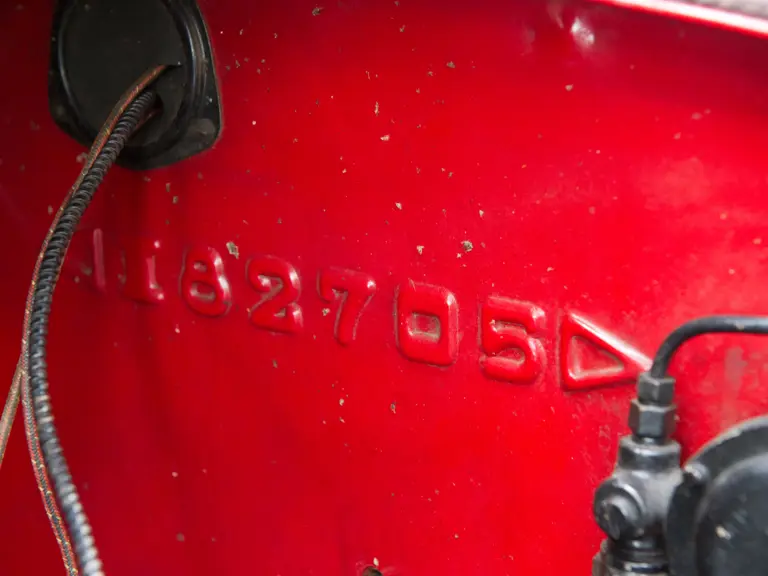
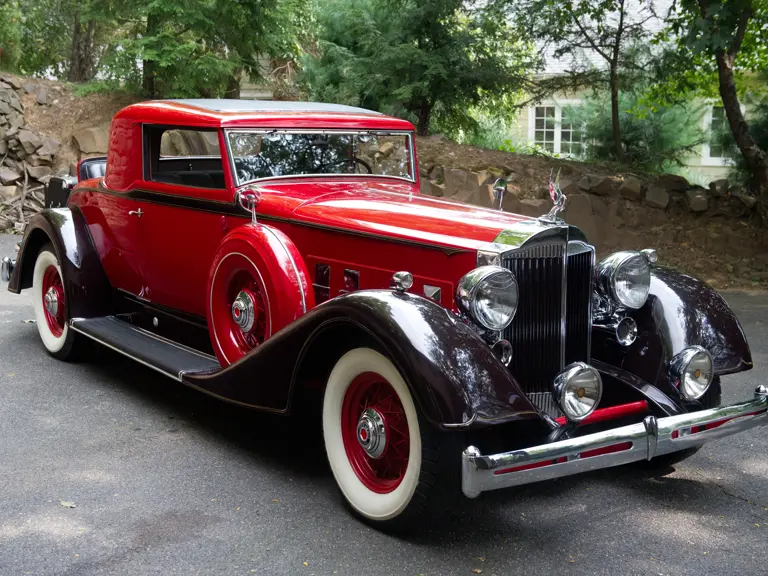
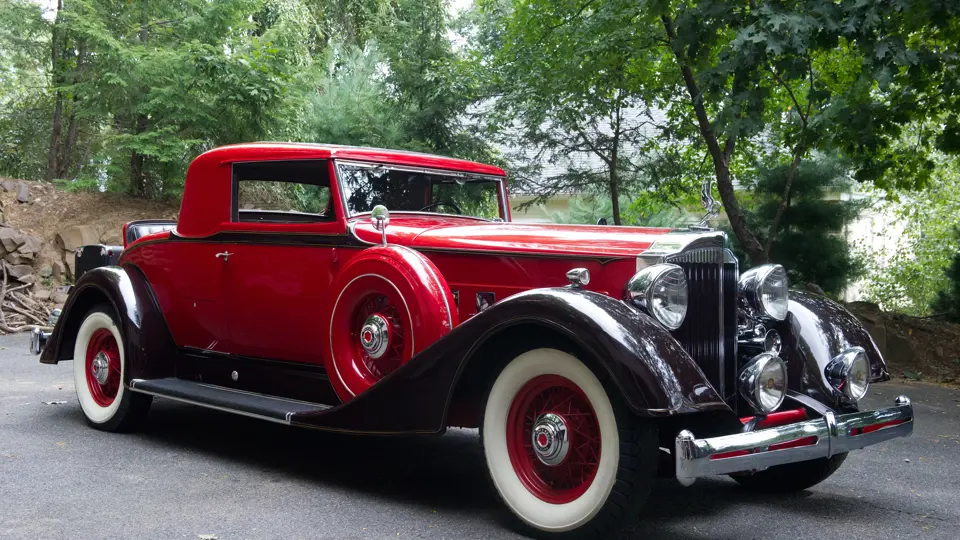
 | Hershey, Pennsylvania
| Hershey, Pennsylvania
